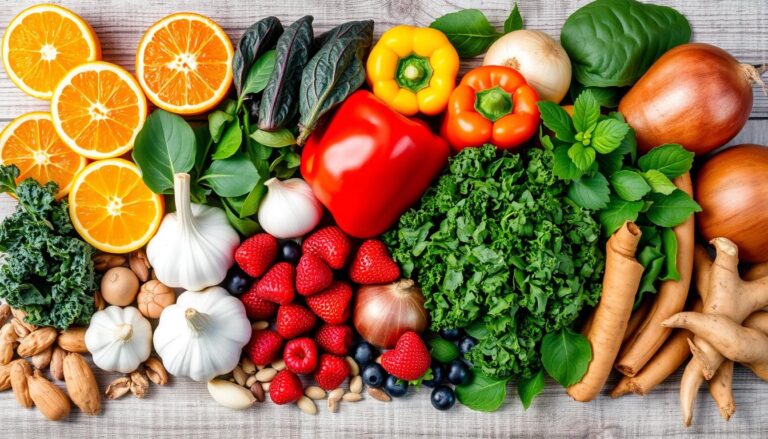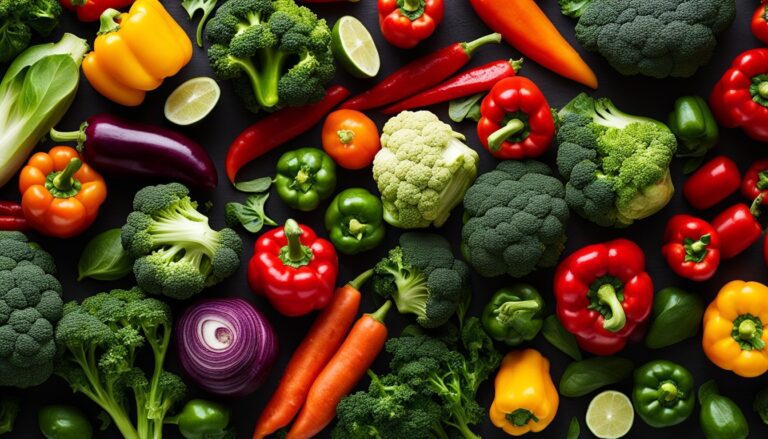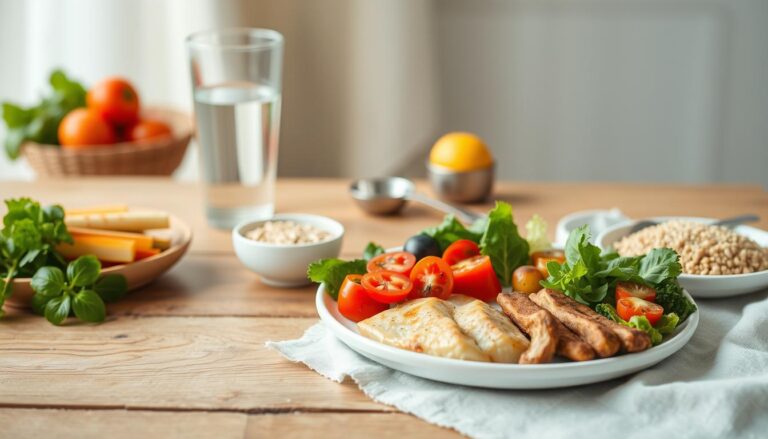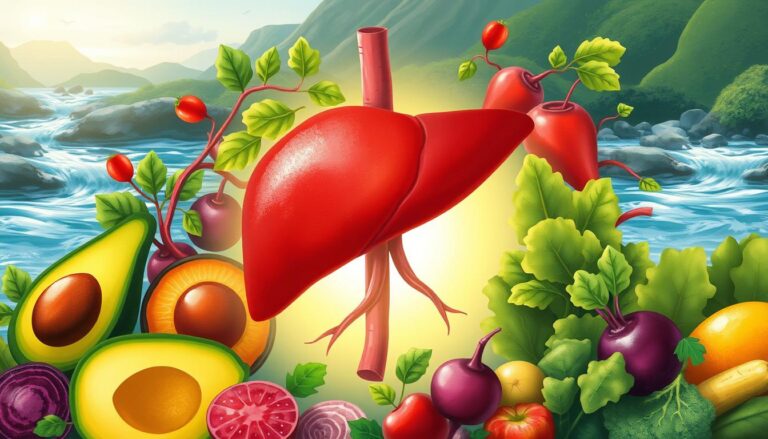About 10/5% of Americans live with ibs and many report bloating gas cramps and shifts in stools. Simple food swaps can reduce flare ups and bring daily relief.
This guide shows practical steps you can try today clear food categories that often trigger trouble gentle options that support comfort and habits that help digestion stay steady.
Expect evidence based tips like a short low FODMAP approach, adding soluble fiber slowly, and using probiotic choices such as yogurt and kefir. Personalized plans matter because symptoms vary widely among people.
Key Takeaways
- Small, guided changes in diet can lower symptoms and improve daily health.
- Identify common triggers dairy high fructose items, beans, artificial sweeteners and limit them.
- Focus on low FODMAP produce, soluble fiber, and probiotic options for gut support.
- Hydration, gradual fiber increases, and a food diary help find what works.
- Work with a healthcare professional before starting elimination or major diet shifts.
Understanding IBS Today Symptoms Triggers and Why Food Matters
IBS is a chronic brain gut disorder marked by weekly abdominal pain plus clear changes in bowel habits for at least three months.
Daily life often includes pain that improves or worsens after bowel movements shifts in stool frequency, or changes in stool texture. Tracking these symptoms helps guide food and lifestyle choices.
Common types and what they look like
Recognizing types helps tailor meals. IBS-C links with harder stools and constipation. IBS-D features loose stools and urgency. Mixed IBS shows both patterns, while unclassified cases vary.
| Type | Typical stool | Common triggers |
|---|---|---|
| IBS-C | Infrequent, hard stools | Low fiber, dairy, large meals |
| IBS-D | Loose or urgent stools | Caffeine, alcohol, fatty foods |
| IBS-M / IBS-U | Mixed or variable | FODMAP-rich carbs, stress |
How certain foods fuel gas and bloating
Poorly absorbed carbs ferment fast in the gut and produce gas, which drives abdominal pain and bloating. Swallowed air from soda or gum adds distention.
- Fructans in onion and garlic
- GOS in beans
- Carbonation, artificial sweeteners, greasy meals
Note: Stress and poor sleep amplify symptoms. Use a food diary and brief lifestyle fixes alongside dietary changes for clearer results.

How We Identified the Best Gut Soothing Foods
We reviewed clinical guidance and patient reports to select gentle, low-fermenting options that reduce gas and discomfort.
Criteria low FODMAP potential soluble fiber and minimal fermentation
Evaluation framework prioritize items low in rapidly fermentable carbs fodmap, with soluble, viscous fiber and low overall fermentation risk. Examples include blueberries clementines, carrots, arugula, and potato.
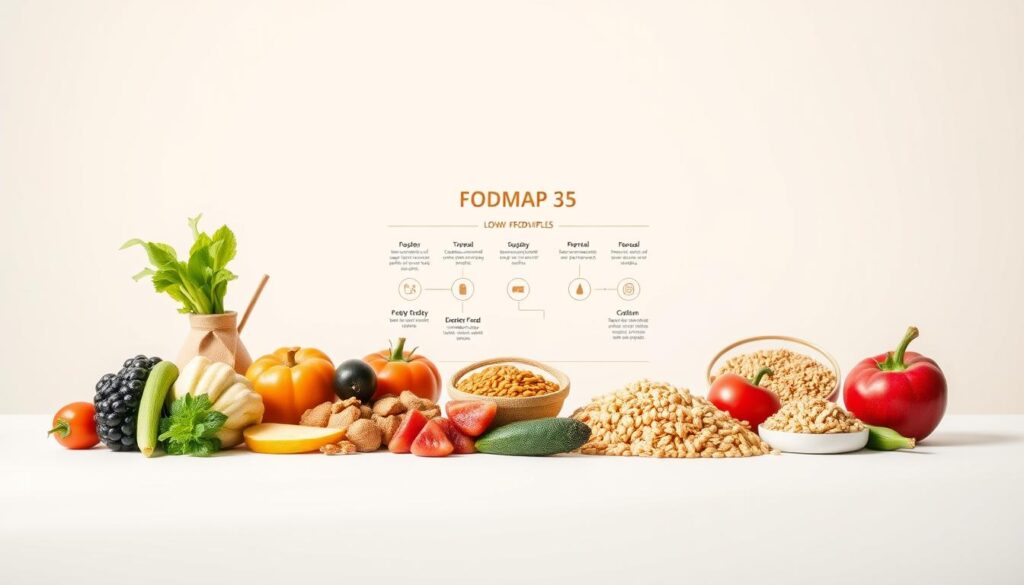
Why soluble fiber matters. Psyllium and similar fibers form a gel that evens stool and lowers urgency. That gel is only modestly fermented and can act as a prebiotic that nudges helpful gut bacteria toward balance.
Probiotics and portion sense. Yogurt, kefir, kimchi, sauerkraut, and miso may support digestion but are not a cure. Even low FODMAP foods can trigger symptoms if eaten in large amounts or introduced too fast.
- Use a short-term elimination for 2–6 weeks, then reintroduce foods slowly.
- Work with a registered dietitian for a data-driven fodmap diet plan and reintroduction schedule.
- Match choices to personal tolerance and keep overall diet quality for lasting health.
| Criteria | Why it helps | Example source |
|---|---|---|
| Low fermentable carbs | Less gas production | Blueberries, potato |
| Soluble, viscous fiber | Stool consistency, reduced urgency | Psyllium husk |
| Limited fermentation | Lower bloating | Arugula, carrots |
| Probiotic support | May aid bacterial balance | Yogurt, kefir, miso |
The best foods to calm irritable bowel syndrome
Choose simple, low-fermenting items that pack nutrients without triggering swelling or pain.
Low-FODMAP fruits and vegetables for fewer flare-ups
Try colorful, low-FODMAP picks: blueberries clementines carrot arugula, and potato. Many people also tolerate spinach zucchini eggplant, and green beans.
Keep portions moderate and spread fruit across the day rather than in one large serving.
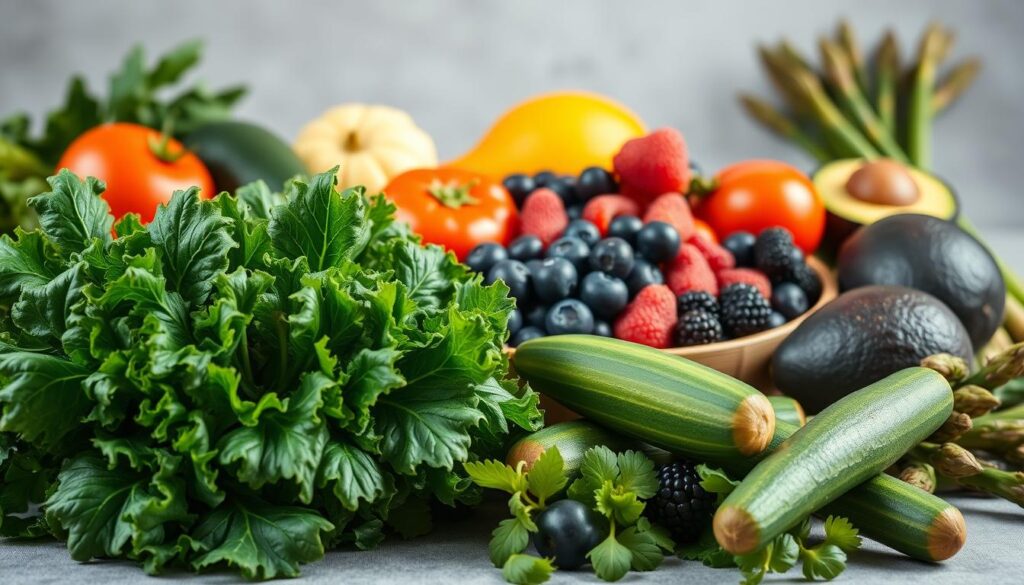
Soluble fiber stars that support regularity and ease pain
Psyllium husk is a top-choice soluble fiber that can smooth stool form and reduce urgency without heavy fermentation.
Note: Some fiber rich items like avocado, mango, and beans may be higher in FODMAPs and should be tested slowly with a food diary.
Probiotic rich options to nurture gut bacteria
Include live-culture items such as yogurt, kefir kimchi sauerkraut, and miso for gentle microbial support.
Probiotic foods can complement dietary changes but are not a cure. Use them as part of a balanced plan.
Lean protein choices that are easy on the gut
Opt for chicken breast and lean cuts of beef. These contain no fermentable carbs and usually sit well with digestion.
- Combine lean protein + low-FODMAP produce + a soluble fiber source for a balanced plate.
- Replace onion and garlic with herbs, lemon, and infused oils for flavor.
Practical tip: Test borderline items slowly and track symptoms. This approach supports gut health and overall health while reducing flare risk for people with ibs.
Top Low FODMAP Produce Picks to Reduce Gas and Bloating
Choosing lower-fructose fruit and gentle vegetables helps limit fermentation that fuels gas and bloating. Start small and test one item at a time while tracking reactions in a food diary.
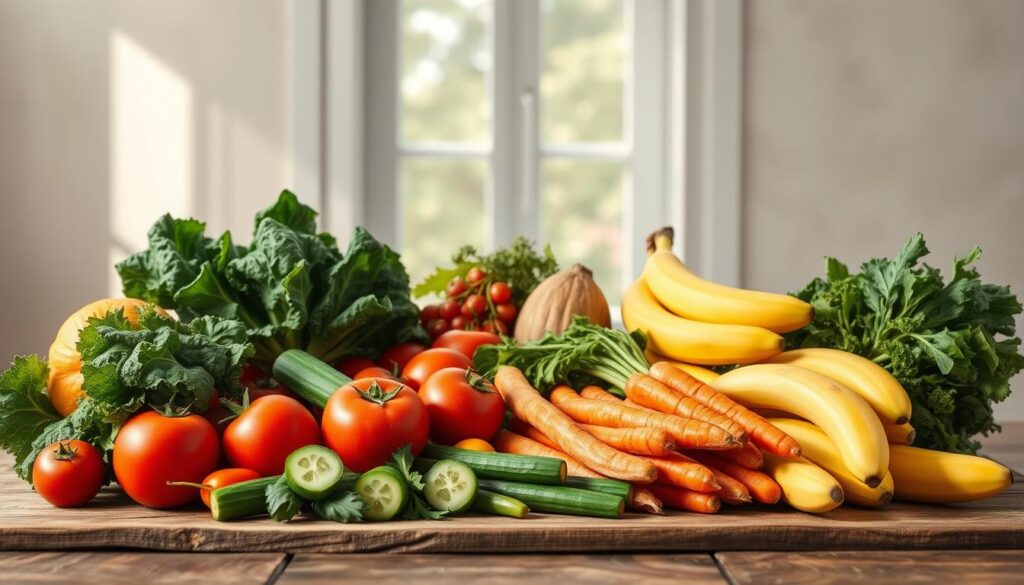
Fruit ideas
Gentler picks: blueberries, citrus clementines or mandarins, firm bananas, grapes, and kiwi.
Choose firmer, less ripe bananas and keep portions modest to lower fermentable sugar load. Rotate colors for more antioxidants and varied fiber.
Vegetable ideas
Often well tolerated: carrots, spinach, green beans, zucchini, and eggplant.
Light cooking steaming or roasting can improve tolerability compared with raw servings.
- Why this list helps: lower FODMAP produce ferments less, so the gut produces less gas that leads to abdominal distention.
- Pair produce with lean protein and a soluble fiber side for steady energy and gentler bowel function.
- Try one new item at a time, log any change, and keep portion sizes moderate large servings can still trigger issues.
Foods to Limit or Avoid When IBS Symptoms Spike
When symptoms spike, short-term limits on some common items often ease discomfort.
High FODMAP culprits such as onion, garlic, and beans ferment quickly in the colon. That fermentation produces gas and bloating and can amplify pain during a flare.
Milk dairy and lactose issues
Many dairy products especially milk, cream, and ice cream contain lactose that can trigger cramping and loose stools for people with intolerance.
Some yogurts are tolerated because live cultures help digest lactose. Hard cheeses and butter usually have very low lactose levels.
Tip: Try lactose‑free milk or lactase enzymes if dairy is important in your routine.
Carbonation caffeine alcohol and fried items
Carbonated beverages add swallowed air that increases distention. Caffeine and alcohol often worsen diarrhea and urgency. Fried foods can irritate motility and prolong symptoms.
Sugar alcohols and artificial sweeteners
Sorbitol xylitol, maltitol, and erythritol pull water into the bowel and often cause diarrhea and loose stools. They hide in many sugar‑free products, gums, and protein powders.
- Scan labels for hidden sweeteners and limit sugar‑free items during flares.
- Use onion/garlic‑free seasonings, citrus, and herbs for flavor instead.
- Restrict suspect items briefly, then reintroduce one at a time while tracking reactions.
| Trigger group | Common examples | Why avoid during spikes |
|---|---|---|
| High FODMAP carbs | Onion, garlic, beans | Rapid fermentation → gas and bloating |
| Dairy/lactose | Milk, cream, ice cream | Lactose can cause cramping and diarrhea |
| Irritants | Coffee, alcohol, fried foods | Increase motility and urgency |
| Sugar alcohols | Sorbitol, xylitol, maltitol | Osmotic effect → loose stools and diarrhea |
IBS Friendly Diet Approaches Low FODMAP Gluten Free, and Lactose Strategies
A focused elimination, staged reintroduction, and careful tracking often clarify personal triggers.
Short-term low-FODMAP elimination with guided reintroduction.
Start with a 2–6 week fodmap diet removal phase to lower fermentable carbs and reduce symptoms for many people ibs. About 75% notice some relief when done correctly.
After improvement, follow a structured reintroduction over several weeks. Reintroduce one food group at a time and log symptoms and stool form.
Work with a registered dietitian or dietitian for safe guidance and to prevent nutrient gaps.
When a gluten-free trial may help IBS-D.
Some with diarrhea-predominant patterns try a short gluten-free trial if tests rule out celiac disease. This can help a subset who react to gluten or related components.
Testing first is important to avoid unnecessary long-term restriction and missing key nutrients.
Lactose light living: lactose-free dairy and tolerable cheeses.
Many tolerate lactose free milk and aged cheeses such as cheddar, parmesan, Swiss, and gouda better than fresh milk or ice cream.
Test small portions spaced across days and track symptoms. The goal is to identify specific culprits, not to eliminate broad groups forever.
Practical notes on treatment and health.
- Tailor diet changes to relief for diarrhea or constipation depending on individual response.
- Monitor progress with a food diary and stool tracking to guide adjustments.
- Pair diet approaches with lifestyle steps and medications when needed for a comprehensive treatment plan.
| Approach | When to try | Key action |
|---|---|---|
| Low-FODMAP elimination | Persistent gas, bloating, mixed symptoms | 2–6 weeks removal, then staged reintroduction with dietitian |
| Gluten-free trial | IBS-D or suspected non-celiac sensitivity | Test for celiac first short trial with monitoring |
| Lactose strategies | Lactose-related cramps or loose stools | Use lactose-free milk, aged cheeses, test small servings |
Practical Swaps Simple Meals, and Smart Habits for People with IBS
Simple swaps and steady habits can cut flare-ups and make daily meals easier to tolerate. Small cooking changes preserve flavor while avoiding common triggers. A short tracking habit helps you see what works.
Easy swaps and flavor ideas
Replace onion and garlic with garlic-infused oil, scallion greens, chives, and fresh herbs. Use lemon, vinegar, and toasted spices for bright taste without trigger risk.
Meal formulas and quick templates
Build plates with a lean protein, a low-fructose vegetable, and a soluble fiber side such as oats or psyllium. That combo supports steady stool form and reduces sudden shifts.
- Breakfast: cooked oats + blueberries + a spoon of yogurt.
- Lunch: grilled chicken + roasted carrots + a small quinoa portion.
- Dinner: baked fish + steamed zucchini + a side of mashed potato.
Hydration fiber pacing and tracking
Increase fiber slowly and drink more water to avoid constipation. Keep a short food diary that logs what, when, portions, and ibs symptoms. This record speeds up useful diet changes.
| Tip | Why it helps | Quick example |
|---|---|---|
| Onion/garlic swaps | Keep flavor, cut common triggers | Garlic‑infused oil, chives |
| Low‑fructose fruit | Lower fermentation, less gas | Berries, kiwi, firm banana |
| Scan product labels | Avoid hidden sugar alcohols | Check gums, shakes, diet items |
| Batch cooking | Reduces decision fatigue | Roast veg, portion proteins |
Conclusion
Small, consistent changes in meals and routine can cut gas and lessen abdominal pain over weeks.
Focus on a simple pattern: lean protein, low‑FODMAP vegetables, yogurt or fermented options, and a soluble fiber like psyllium. Limit beans, milk if lactose causes trouble, high fructose items, soda, caffeine, and fried snacks during flares.
Symptoms often link to fermentation and shifts in gut bacteria. A short fodmap diet reintroduction, guided by a registered dietitian, helps identify triggers without long‑term restriction.
For people with irritable bowel syndrome, gradual steps, steady hydration, sleep, and stress care form a practical treatment plan. Track responses and work with a dietitian for safe, lasting gut health improvement.
